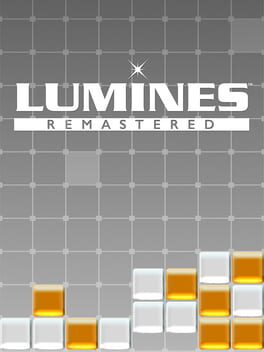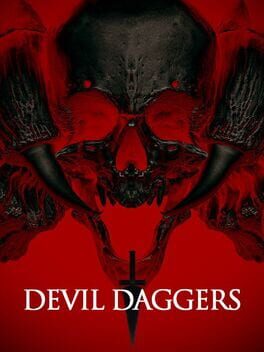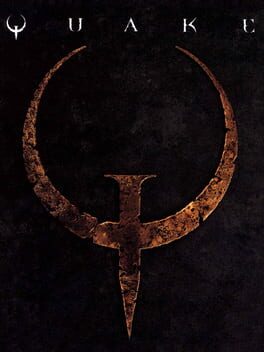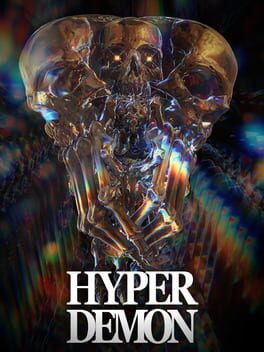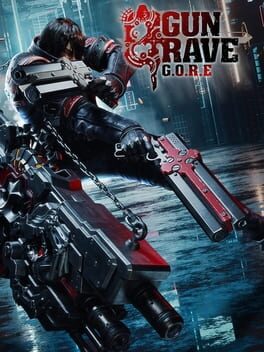Bazinger_Z
Bio
fell down the stairs and landed in this website all of my games fell out of my pocket
they/them
fell down the stairs and landed in this website all of my games fell out of my pocket
they/them
Badges

Liked
Gained 10+ total review likes

Noticed
Gained 3+ followers

Shreked
Found the secret ogre page

Gamer
Played 250+ games

N00b
Played 100+ games
Favorite Games
346
Total Games Played
002
Played in 2024
055
Games Backloggd
Recently Played See More
Recently Reviewed See More
I picked this game up on a whim based on the visual style. I've put dozens of hours into Dead Cells, one of the most pleasantly tactile side-scrollers I've played in recent history, so discovering that Undying Moon was a pretty blatant clone that doesn't play (or run, on Switch) nearly as well was like getting hit with a stun-gun. I tried to give it an honest shot, but every time I died in the opening level, my evening got just a little bit worse.
Undying Moon came with a copy of the original GetsuFumaDen for Famicom (ported by the masters at M2, no less) so I started playing it as a consolation prize only to discover it was completely untranslated. The game also came with a crisp scan of the instruction manual to give the player some extra guidance. This was also untranslated.
I'm not going to rate this, but that's okay because I don't really want to rate this. I don't really want to think about this much at all.
Undying Moon came with a copy of the original GetsuFumaDen for Famicom (ported by the masters at M2, no less) so I started playing it as a consolation prize only to discover it was completely untranslated. The game also came with a crisp scan of the instruction manual to give the player some extra guidance. This was also untranslated.
I'm not going to rate this, but that's okay because I don't really want to rate this. I don't really want to think about this much at all.
I've never played Armored Core, and other than Overturn (2008, WiiWare), I'm not sure I've ever played a mech game at all. Like many playing Fires of Rubicon for the first time, my only exposure to From Software has been through their action-RPGs, namely everything post-Souls as well as the first two games in the PS1 King's Field trilogy. I may not have much insight into how it holds up in the series or even the genre, but I can speak to my experience as a newcomer.
That experience was fun as hell.
Armored Core Six feels very, very good to play. You don't walk very much but it looks cool when you do (if your mech has legs at all), your boost lets you skate along the ground gracefully without sacrificing the weight of a 30-foot titan, and your dash is generous and your stamina (EN) is plenty. I spent most of the game feeling wildly overpowered, tearing through most of the non-boss missions like the Absolute Terror that AC6 kept telling me I was. A few bosses gave me some trouble, but I eventually realized that if a boss asks you to use different guns, you just go the the Different Gun Store. Since AC6 isn't really an RPG with level progression, some reconfiguring is usually enough to get over any choke points, even it takes some trial and error to see what does and doesn't work for a build. The money rewards from the later missions aren't that much bigger than those from the earlier ones, so there's always a ready source of COAM to spend if you don't mind doing a few chores.
The game took a little less than a week to get through the initial campaign, maybe 20 hours or so, and even that was with me taking my sweet, sweet time. It takes three playthroughs to unlock the final ending, not unlike the original NieR's A, B, and C/D routes, but those playthroughs let my mech get even stronger while leaving enemies behind, so I finished them pretty quickly. Unlike some of the other FromSoft games I've played, the requirements for each ending are generally pretty intuitive. The base campaign stands up pretty well on its own, but NG+ and NG++ each unlock unique missions and weapons, and they tie up most of the seemingly loose ends from the original campaign.
A not-insignificant chunk of time was spent in the garage. You get full control over your mech colors from the very beginning, and you can adorn your AC with a full-fledged CoD-style decal maker. (PSA: Did you know that "toggle masks" turns a layer into a stencil for every layer below it? That's not a big deal, but did you know that if you put that mask in a layer group, it only applies to layers in that group? Combine that with some gradient wizardry and you're basically the Matrix Neo of stickers.) The customization probably ate four of my first five hours with the game, and I regret none of it. My first mech was supposed to look like Samus's ugly Gravity Suit from Metroid Prime, the second was an Arctic Cool snow machine, and I crashed through NG+/++ with a beautifully garish Lisa Frank mech, complete with a 128-layer Forrest the Tiger decal that took six more hours to make.
Playing a game with a Little Guy that I designed made the game that much more engaging. I've never stuck with games that rely heavily on role-playing as a character, but mowing down Rubicon's nasties in the Frank Tank had me grinning and cheering the entire time, taking plenty of snapshots along the way. AC6's robust photo mode was the first time I've taken advantage of that feature in any game.
I enjoyed the mechanical aspects of customization as well. Even though I found a few loadouts that carried me through most of the game, I was always excited to check back on the store and window-shop all the new additions, and I spent more brainpower than I thought I would optimizing the non-weapon parts on my AC. As for the weapons themselves, some of the guns you can slap onto your Walking War Crime would make even Iron Man blush, and a few get pretty ridiculous by the end of the game. Character progression is largely handled by buying more stuff, but the game is pretty clever about what it does and doesn't let you buy throughout the campaign. I was surprised by just how I often I kept saying "Wow, that's just what I needed" after an alert for a new batch of store items.
The few non-store upgrades are locked behind the Arena, a set of side missions where you duel holograms of various in-game characters, but my loadouts made pretty quick work of most of them. I've seen some people wonder if they were supposed to be that breezy, but those fights seemed less like challenges and more like an excuse to show off the wide selection of weapons and mechs alike. Getting your back blown out by twenty-four missiles at once is a pretty good advertisement for a pair of 12-cell missile launchers.
The campaign's tone was lighter than I expected from the marketing, but its action-blockbuster plot will live in my head for a long time as roommates with Avatar and Attack of the Clones. The game's five chapters are all well-paced, and the story is pretty self-contained even without the lore snippets scattered throughout the level. I'm beginning to appreciate games that don't leave much room for canon to be dictated by Explainer channels regurgitating Fandom wikis and Reddit posts.
Armored Core VI left me more satisfied than I've felt from a game in a long time, and it wouldn't surprise me if replaying it becomes a yearly tradition. Armored Core VI is me raising a glass across time and memory to a much younger me making my Unicron and Primus Transformers fight each other.
Armored Core VI doesn't miss.
Final playtime: 63 hours
Score: 5/5
That experience was fun as hell.
Armored Core Six feels very, very good to play. You don't walk very much but it looks cool when you do (if your mech has legs at all), your boost lets you skate along the ground gracefully without sacrificing the weight of a 30-foot titan, and your dash is generous and your stamina (EN) is plenty. I spent most of the game feeling wildly overpowered, tearing through most of the non-boss missions like the Absolute Terror that AC6 kept telling me I was. A few bosses gave me some trouble, but I eventually realized that if a boss asks you to use different guns, you just go the the Different Gun Store. Since AC6 isn't really an RPG with level progression, some reconfiguring is usually enough to get over any choke points, even it takes some trial and error to see what does and doesn't work for a build. The money rewards from the later missions aren't that much bigger than those from the earlier ones, so there's always a ready source of COAM to spend if you don't mind doing a few chores.
The game took a little less than a week to get through the initial campaign, maybe 20 hours or so, and even that was with me taking my sweet, sweet time. It takes three playthroughs to unlock the final ending, not unlike the original NieR's A, B, and C/D routes, but those playthroughs let my mech get even stronger while leaving enemies behind, so I finished them pretty quickly. Unlike some of the other FromSoft games I've played, the requirements for each ending are generally pretty intuitive. The base campaign stands up pretty well on its own, but NG+ and NG++ each unlock unique missions and weapons, and they tie up most of the seemingly loose ends from the original campaign.
A not-insignificant chunk of time was spent in the garage. You get full control over your mech colors from the very beginning, and you can adorn your AC with a full-fledged CoD-style decal maker. (PSA: Did you know that "toggle masks" turns a layer into a stencil for every layer below it? That's not a big deal, but did you know that if you put that mask in a layer group, it only applies to layers in that group? Combine that with some gradient wizardry and you're basically the Matrix Neo of stickers.) The customization probably ate four of my first five hours with the game, and I regret none of it. My first mech was supposed to look like Samus's ugly Gravity Suit from Metroid Prime, the second was an Arctic Cool snow machine, and I crashed through NG+/++ with a beautifully garish Lisa Frank mech, complete with a 128-layer Forrest the Tiger decal that took six more hours to make.
Playing a game with a Little Guy that I designed made the game that much more engaging. I've never stuck with games that rely heavily on role-playing as a character, but mowing down Rubicon's nasties in the Frank Tank had me grinning and cheering the entire time, taking plenty of snapshots along the way. AC6's robust photo mode was the first time I've taken advantage of that feature in any game.
I enjoyed the mechanical aspects of customization as well. Even though I found a few loadouts that carried me through most of the game, I was always excited to check back on the store and window-shop all the new additions, and I spent more brainpower than I thought I would optimizing the non-weapon parts on my AC. As for the weapons themselves, some of the guns you can slap onto your Walking War Crime would make even Iron Man blush, and a few get pretty ridiculous by the end of the game. Character progression is largely handled by buying more stuff, but the game is pretty clever about what it does and doesn't let you buy throughout the campaign. I was surprised by just how I often I kept saying "Wow, that's just what I needed" after an alert for a new batch of store items.
The few non-store upgrades are locked behind the Arena, a set of side missions where you duel holograms of various in-game characters, but my loadouts made pretty quick work of most of them. I've seen some people wonder if they were supposed to be that breezy, but those fights seemed less like challenges and more like an excuse to show off the wide selection of weapons and mechs alike. Getting your back blown out by twenty-four missiles at once is a pretty good advertisement for a pair of 12-cell missile launchers.
The campaign's tone was lighter than I expected from the marketing, but its action-blockbuster plot will live in my head for a long time as roommates with Avatar and Attack of the Clones. The game's five chapters are all well-paced, and the story is pretty self-contained even without the lore snippets scattered throughout the level. I'm beginning to appreciate games that don't leave much room for canon to be dictated by Explainer channels regurgitating Fandom wikis and Reddit posts.
Armored Core VI left me more satisfied than I've felt from a game in a long time, and it wouldn't surprise me if replaying it becomes a yearly tradition. Armored Core VI is me raising a glass across time and memory to a much younger me making my Unicron and Primus Transformers fight each other.
Armored Core VI doesn't miss.
Final playtime: 63 hours
Score: 5/5
Gunvalkyrie is an odd little game. It doesn't really tell the player what kind of action game it's supposed to be; it's on the player to figure it out, and the game becomes less and less forgiving until that happens.
When I first fired up the game, I was presented with a big valley filled with bugs and giant mushrooms. I had a blaster for the bugs, complete with a Rez-style lock-on reticle, and the game told me I could use my jetpack to make my way to the top of the mushrooms by jumping, hovering, and dashing. I tank-controlled my way through the level like a bad PS1 platformer until I reached the item I was supposed to retrieve, then I turned around to make my way back to the insertion point. The way home was mainly downhill, so I decided to try and boost my way back using the jetpack, and I accidentally realized that repeatedly boosting with the right timing lets you glide around the level indefinitely. This is by design.
Gunvalkyrie does not want the player on the ground, and the ground becomes a more dangerous place over the course of the game. One level takes place above a poison swamp, and a later boss fight fills the arena floor with so many enemies resting means certain death. If you've mastered flight you become nearly untouchable, and the encounter becomes a game of boosting around and firebombing the floor-bound enemies into next week.
Halfway through the game you unlock an ability that lets you spend your fuel gauge (separate from your boost) to dash in the direction of the camera, letting you recover altitude and refill your boost bar. Conversely, boosting around builds up an aerial combo meter, and incrementing this meter replenishes your fuel. Between the two, the levels become wide open, and the game stops being much of a platformer at all. The catch of the game is that before the game "clicks", it feels like a daunting adventure motivating you with nothing but those SmileBit vibes, but once you do, the game breaks wide open and leaves you wanting a little bit more to practice your new tricks on.
I didn't really understand the story, even after reading all the in-game logs and the manual, and even if I could I think it would be a mess. You play as someone who deserted the extremist Irish Republic for the interplanetary British Empire, but the game's a little too confusing for me to figure out where they were going with that, if anywhere at all. The irony is that it's so convoluted that you can ignore the story completely, and the introduction of the final boss will be all the funnier for it.
I had a good time with Gunvalkyrie once I got over the controls. I played it on a modern Xbox, so I remapped the controls to move the stick-clicks to their respective shoulder buttons and inverted the right stick's y-axis, and movement became much more manageable. It's a neat little Xbox relic.
When I first fired up the game, I was presented with a big valley filled with bugs and giant mushrooms. I had a blaster for the bugs, complete with a Rez-style lock-on reticle, and the game told me I could use my jetpack to make my way to the top of the mushrooms by jumping, hovering, and dashing. I tank-controlled my way through the level like a bad PS1 platformer until I reached the item I was supposed to retrieve, then I turned around to make my way back to the insertion point. The way home was mainly downhill, so I decided to try and boost my way back using the jetpack, and I accidentally realized that repeatedly boosting with the right timing lets you glide around the level indefinitely. This is by design.
Gunvalkyrie does not want the player on the ground, and the ground becomes a more dangerous place over the course of the game. One level takes place above a poison swamp, and a later boss fight fills the arena floor with so many enemies resting means certain death. If you've mastered flight you become nearly untouchable, and the encounter becomes a game of boosting around and firebombing the floor-bound enemies into next week.
Halfway through the game you unlock an ability that lets you spend your fuel gauge (separate from your boost) to dash in the direction of the camera, letting you recover altitude and refill your boost bar. Conversely, boosting around builds up an aerial combo meter, and incrementing this meter replenishes your fuel. Between the two, the levels become wide open, and the game stops being much of a platformer at all. The catch of the game is that before the game "clicks", it feels like a daunting adventure motivating you with nothing but those SmileBit vibes, but once you do, the game breaks wide open and leaves you wanting a little bit more to practice your new tricks on.
I didn't really understand the story, even after reading all the in-game logs and the manual, and even if I could I think it would be a mess. You play as someone who deserted the extremist Irish Republic for the interplanetary British Empire, but the game's a little too confusing for me to figure out where they were going with that, if anywhere at all. The irony is that it's so convoluted that you can ignore the story completely, and the introduction of the final boss will be all the funnier for it.
I had a good time with Gunvalkyrie once I got over the controls. I played it on a modern Xbox, so I remapped the controls to move the stick-clicks to their respective shoulder buttons and inverted the right stick's y-axis, and movement became much more manageable. It's a neat little Xbox relic.

